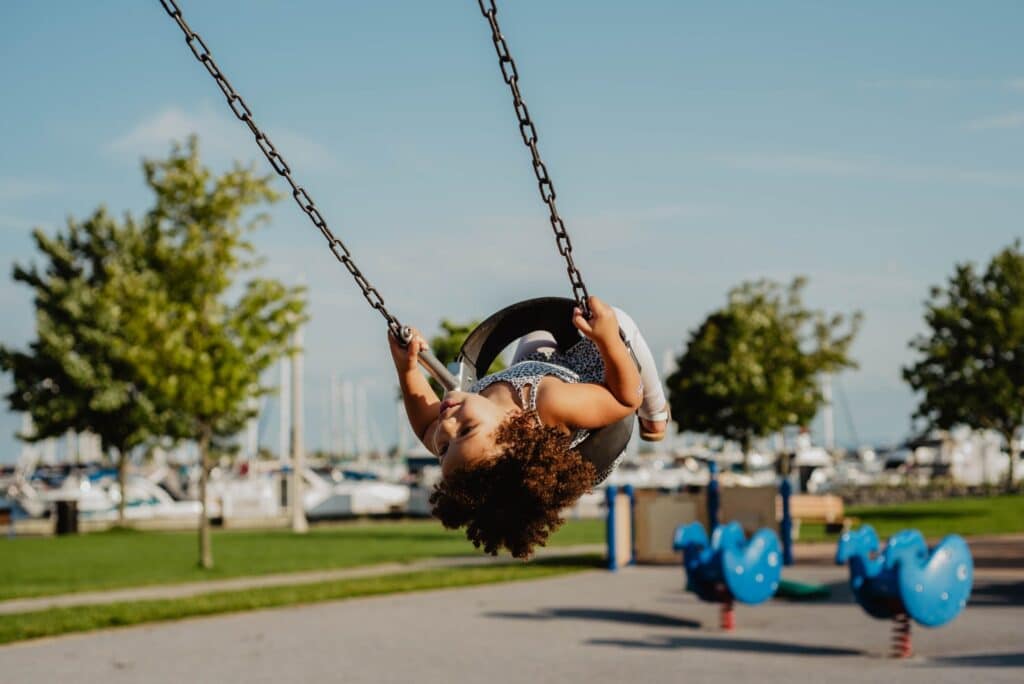The safety and well-being of your child is likely the number one concern of being a parent. So why let your child engage in risky play? It’s not as bad as it seems. Despite what you may think, risky play does not include letting your child do whatever they want, or letting them get into dangerous and unsafe situations. Instead, risky play allows children to take risks at their own pace with parental support. Parents are encouraged to help their child assess the level of risk they’re taking and identify potentially dangerous hazards. Parents should not be controlling the level of risk their children take or pushing them too far out of their comfort zones either.
There are several types of risky play which were identified by Ellen Sandseter, who is a Norwegian professor and researcher specializing in early childhood. Each type is listed below with examples of play provided.
Great Height: climbing trees, balancing on objects high off the ground, jumping off surfaces, or jumping from one level to another
High Speed: riding a bike down a hill, running fast, sliding or skating at fast speeds, swinging fast
Dangerous Tools: playing with loose parts and tools (for example, hammers, wood, saws, etc.)
Dangerous Elements: helping build a campfire, swimming in deep water
Rough and Tumble: play fighting, wrestling, playful chasing
Getting Lost: playing hide and seek, exploring the woods or unfamiliar areas
Parent support and supervision (without being overbearing) is important in keeping children safe when engaging in risky play. Any of these activities can be seriously dangerous if children are left unattended. Risky play includes the possibility of injury, but it should be reduced to minor cuts, scrapes, and bruises. It is the parent’s responsibility to identify unsafe situations and hazards in an effort to avoid serious injuries. As parents, you know your child best, so take into consideration their needs and what they’re comfortable with.
So what does risky play have to do with occupational therapy? Play is the most important occupation for children. It helps them develop many crucial skills, which aids in developing a well-rounded child. Many, if not all of the activities listed above, provide proprioceptive and vestibular input to the body, which helps children develop their sense of body and safety awareness. Proprioceptive input provides sensory input to the receptors in our muscles and joints while vestibular input is our sense of movement and balance. When given both types of input, children have a better understanding of where their body is in space and can help them feel more regulated.
With the weather getting warmer, it is important for children to be playing outside in natural environments. Take your child to the playground, or better yet, take them to a natural playground for some less structured play. Go to the park, explore the woods, go hiking – whatever you do, just get them outside!
Additional information regarding risky play is linked below:
https://skprevention.ca/safety/risk-in-play/#tab-id-14
Written by Laura Tarone, MS OTR/L

